#sports classification
Explore tagged Tumblr posts
Text
Talking Sports
“And then I found out we weren’t the only species to invent football!” I said to Wio as she opened food packets. Normally I would have enjoyed watching the way someone with tentacles unwraps things, but I was focused on my story. “I mean, I know it’s a very simple concept, but that was incredibly strange to turn the corner and see a bunch of beefy dinosaur-looking people tackling the quarterback.”
“I’m sure,” Wio said, popping the lid off a jar. “Is this one of the ‘gimme the ball’ games, or ‘get rid of the ball’ games?”
“Um.” I paused to think. “I guess you can categorize them like that, can’t you? Never thought about it. It’s a ‘gimme the ball.’”
“Are those the more common type?” Wio pushed my own lunch tray towards me, which I’d forgotten about.
“Thanks. Maybe?” I poked through the stack of individually-wrapped human foods as I thought. These were from another mystery box of Earth stuff from our last supply run. I started with the turkey jerky. “There’s a lot of sports to keep track of. Fighting to keep the ball is football — and rugby, which is similar — soccer, where you just use your feet; basketball, where you have to keep bouncing the ball; hockey, where you smack it across the ground with a stick… Oh, and lacrosse, where you throw it with a stick that has a net on it. And I’m probably forgetting a ton.”
“Mm,” Wio said conversationally. She scooped up a mouthful of stinky fish paste with the Strongarm version of a spoon, which had a handle shaped like a jumbo tongue depressor. She didn’t bother grabbing it, just sticking her suction cups to the underside. “That’s six. What about games where the goal is to chuck the ball into the sun?”
I talked over a bite of jerky. “There’s probably not as many, at least if you’re strict about the definition. In baseball you’d definitely be a star if you hit the ball into orbit, but the others tend to have a specific place where you want the ball to go. That can be the other side of the court, like tennis, volleyball, or badminton — or even ping-pong — but then there’s golf, where it looks like you’re trying to whack the ball as far as possible, but really you’re aiming for a tiny hole at the end of the field.”
“Six again,” Wio commented. “Or just one, depending on definitions.”
“I know I’m forgetting some,” I said. “What else is there where you throw the ball as far as possible? I mean, there’s competitive javelin throwing, but that’s not the same kind of game. One person at a time going for the highest score, instead of two teams playing against each other at the same time. With javelins, that would just be actual warfare, and then you’d be aiming at people anyway, not going for distance.”
Wio finished the fish paste. “You do seem to have a lot of team games,” she said. “I’m used to more of that ‘highest score’ kind.”
“Yeah?” I asked, intrigued. “What kind of sports do Strongarms have?”
“Well, we do have some that are cooperative,” she admitted. “At least where I’m from. A lot of races, some with an object to carry and a goal. Sometimes the object is a teammate. And there are a few varieties of wrestling, some with limitations or challenging locations.”
“That sounds fun. Challenging how?” I reached for more jerky, and realized the package was empty. I moved on to a squeeze-tube of applesauce.
“Oh, there’s a bunch of options,” Wio said, waving a tentacle. “People are always coming up with more. My favorite is probably the balancing on top of a pole one.”
“Cool.” The applesauce was nice and cinnamon-y. “Do you have a least favorite?”
“In a box,” she said immediately. “That one is stupid and hard.”
“I bet!” I said.
Wio began peeling what looked like a blue-and-green onion. “But anyway, most of the competitions are solo challenges. Lots of puzzles. And many of the ones with multiple people acting at once are just a way of saving time so we don’t have to wait to see who’s best at the puzzle.”
“Do you do any climbing?” I asked. “Obstacle courses?”
“Oh sure,” she said. “Some of the races are vertical. And there’s a whole category of seeing who can wriggle through odd-shaped openings the fastest.”
I watched her peel the thing, which had far more layers than I’d expected. “Sounds like the only games with a ball to move around are the races. Some of them.”
Wio paused and stared at the wall with a thoughtful expression on her octopuslike face. “I’m probably forgetting some too, but nothing’s coming to mind. There are things with floating objects, but those are more swimming challenges, not focusing on the objects themselves.”
“Pity,” I said as she finally ate the core of the onion, which was the size of a grape. “Ball games can be a lot of fun.”
“I believe you,” she said in the tone of someone not particularly motivated to do anything about it. Then she started eating the blue onion skins like potato chips.
“Have you ever tried one?” I pressed. “Even a simple thing like catch or keep-away?”
“I don’t know what either of those are, but I can guess.” She said, crunching away.
“What about…” I searched through my food options for an orange or a walnut or something. I found a tuna can. “Table hockey! Here, set the trays on the bench; I just want to show you real quick.”
I didn’t really expect her to agree, but she shoved the last of the crunchy things in her mouth and moved the remainder of her lunch. This table wasn’t very wide, hardly a proper playing field, but that would make it easier for a rookie. I set my tray on the bench seat next to me and explained the rules. “We just whack it towards each other and try not to let it fall off our side of the table. If you get it off my side, you get a point. Got it?”
“And the other sides are no one’s point, right?”
“Right. If we want to make it harder, we can say you lose a point for hitting it off there, but no need.”
“All right.” She splayed an unfair number of tentacles across her side of the table. “Let’s do it.”
I shoved the can at a reasonable speed, only to have her thwap it back at me hard enough to hurt when I caught it. I laughed. “Oh, it’s going to be like that, is it?”
Wio smiled with her weird little alien mouth. “Was that meant to be difficult?”
“Oh, it is on.”
Thus began a riotous game of table tuna, which ended up making such a ruckus of laughter and whacks against the cabinets that Eggskin came in from the kitchen to see what was going on.
Wio waved three tentacles at them. “We’re playing an Earth sport!”
“I see,” they said, turning their scaly head in a clear inspection for damage to the cabinets. “I trust you’ll be eating the contents of that can, now that you’ve thoroughly dented it.”
“Sure, sure,” I said, turning the can over. “Oh, this is starting to leak, isn’t it?”
“And I trust you’ll be cleaning up your own mess?”
“Yep. Sorry.”
“I’ll leave you to it, then.” Eggskin swept away with all the dignity of an elder who’d caught the kids getting into trouble. I had no idea how old they were, but they definitely had grandparent vibes sometimes.
Luckily the can had only dripped a little, and was easy to wipe up. Wio and I were soon back with lunches in front of us. I was looking for crackers to put the tuna on when Wio spoke up.
“You should try a Strongarm game now.”
I looked up. “I suppose that’s fair. Do you have one in mind?”
She held up a white jar with multiple seams and no obvious lid. “A classic puzzle is opening something without looking. Like this youth-proof seal.”
“Okay,” I said, holding out a hand for it. “I’ll give it a shot.”
Instead of handing it to me, she grinned wider. “You can’t just sit there, of course. You should lie down on your back. And open it under the bench behind you.”
“Whaaat,” I said. “You are making that up.”
She was outright giggling now. “This is literally a child’s game to see if they’re old enough to open containers on their own.”
“Fine.” I got as comfortable as I could on the hard bench, and she handed me the jar. I held it under the bench, and immediately regretted my choices. “Ow. This game was designed for someone who has tentacles instead of shoulder joints.”
Wio’s voice oozed amusement. “Surely you can handle a child’s puzzle? Come on, I’ll open this one at the same time. See if you can beat me.”
I grunted, twisting at yet another part that didn’t twist. Today’s lunchtime had turned out so educational. “I guarantee you I cannot.”
~~~
Inspired by this post, and also partly by the octopus skill at opening jars.
Ongoing backstory for the main character of this book. More to come!
#my writing#the Token Human#humans are weird#haso#hfy#eidw#sports#humans are space orcs#sports classification
329 notes
·
View notes
Text
Announcing the Vuelta a España Fanwork Classification 2024!

Come one, come all, turn off the Olympics for a brief moment and persuse the course ahead!
On this, the eve of the Olympic Road Race, the prompts for the Vuelta Fanwork Classification 2024 are being released ahead of time to give people time to prepare! More details will come shortly, but be aware that while you can create as much as you want, the classification will only open for posting on the day of the team presentation, so at August 15th 00:00am GMT. The classification will close on midnight the day after the final stage, so on the 9th September 11:59am GMT.
The same rules apply as the previous round. You are welcome to fulfill as many or as few prompts as you wish, in whatever order you wish. Whoever wins the General Classification with the most stages passed will win the prestigious glitter jersey- but in spain it is of course the maillot chispeante!

Should you wish to aim for a smaller goal, each category of stage will also have its own Category Classification. The winner of each of these classifications will get a little PNG accesory to show off their specialised skills!
Start thinking, start planning, and drop an ask if you have any questions!
22 notes
·
View notes
Text
.
#genuinely instead of messing around in a u23 classification issue with no easy solution#maybe the uci should do something about the junior-directly-to-worldtour pipeline that is becoming increasingly common#truly i believe that all riders would benefit from a year or two on a conti/devo team before moving up to the worldtour#even just physically the difference in racing difference from juniors to wt is so huge and these are really just kids#honestly maybe there shouldn’t be teenagers on the worldtour at all - not bc the level isn’t there but they need more time to develop#the sport just skews younger and younger each year and that’s not a good thing#similar but less safety related: tighter regulations on contracts for young riders#isaac del toro having a contract through 2029 makes me physically cringe
8 notes
·
View notes
Text
i will never fully and completely trust the people who make watching the olympics non-stop their entire personality for the entire duration of it but then don't say a word about the paralympics
#sami rambles#the paralympics are arguably better#like a lot of the times once your favourite event is over in the olympics its over for another 4 yrs#but the classifications in the paras means you get to see your favourites multiple times#also. just wheelchair sports like rugby basketball and tennis are like. imo ten times better than their standing counterparts#it just adds an extra level of skill to the game#anyway sorry. just had a conversation with someone and was like. oh boy u do not think the way i think 😵💫
7 notes
·
View notes
Text
There are works which are not [genre] but works made that have read a lot of [genre]. YJ is not an anime but it is a cartoon that has watched a lot of anime. MTMTE is not a comedy but it is a space opera that has watched a lot of sitcoms. I’d like to learn the term for a work that is deep in conversation with a genre without belonging to that genre even as a hybrid. Specifically works that address, lampshade, satirize, employ genre signposts without obeying genre conventions.
#or another example. oofuri is a sports manga and it is also a bl and that’s perfectly fine#ao no flag is a romance and is not a bl despite hitting a lot of the bl tropes. it is a manga that expects you to know what a bl looks like#and it consciously evades that classification. the resolutions it chooses and the framing it uses aren’t right. aren’t the same#MTMTE is comic (hah) but unlike a true comedy the resolution never comes from irony or fun or a twist#discworld is a deadly serious fantasy AND a pure comedy because every book’s resolution is a trick of irony and deception.#each book is a 400 page joke that ends with a hell of a punchline.#MTMTE on the other hand resolves its arcs in a very straightforward way#there’s not necessarily a gotcha or a ‘you thought!’ even the plot twists are an act of drama rather than cleverness#so while MTMTE has a sense of humour it’s just a story with jokes rather than a comedy#I know I know Greek comedy blah blah in this post I’m using the modern sense of the term#kelsey rambles#or Star Wars—it’s a space western action series that has watched a lot of samurai movies (OT) and some wuxia (PT/EU)
29 notes
·
View notes
Text









#Paralympics 2024#Paris Paralympics 2024#Paralympics#Paris Paralympic Games 2024#disability sports#classification#athletes
2 notes
·
View notes
Text
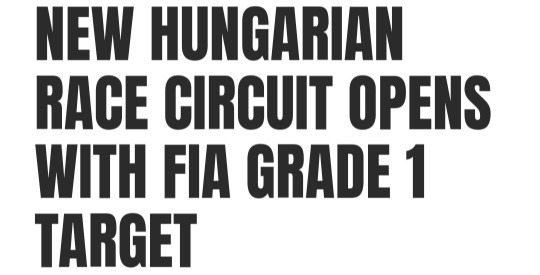


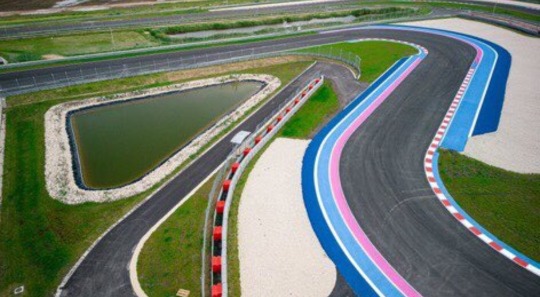

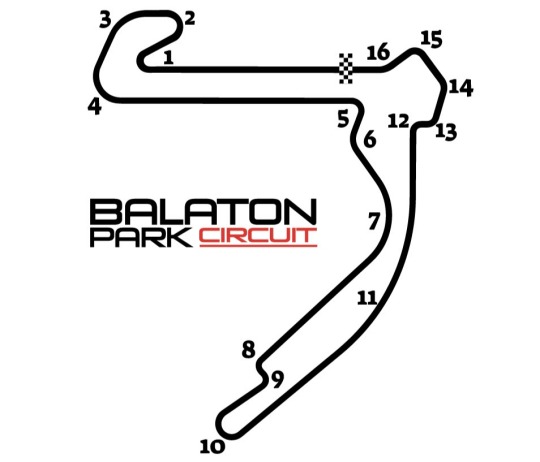
New 4.115 km long anticlockwise circuit with 16 turns has opened in Hungary near Lake Balaton!
#i love it😍#the corners look really good for overtaking!#it looks like a fun track to race on😊#i would love for it to get the grade 1 classification#lake balaton is gorgeous and a sporting event would be so good for tourism#f1#balaton park circuit
21 notes
·
View notes
Text
I had heard baseball called a rarity in that the defense possesses the ball as a matter of course, hadn’t thought of it systematically. A soccer team with a late lead (or perhaps wanting to hold onto a draw) would want to hold onto the ball defensively, like a keeper being slow to take a goal kick. Turnovers in gridiron football would be defensive possession
In sports with fluid action rather than separate plays (itself a major classification), once the defense gains possession they become the offense
Here’s how the Dewey decimal system classifies sports (#796):
https://www.librarything.com/mds/796
.2 is activities requiring equipment not specified below such as .22 skateboarding .3 ball sports .31 ball in hand games like .312 handball .32 ball and net games like .323 basketball .33 various forms of football such as association football (soccer) at .334 .34 racquet sports like .342 tennis .35 ball and stick sports such as .357 baseball .4 other events in the Summer Olympics such as marathon at .425 (includes non-Olympic or not-Olympics-specific things about those sports) .6 cycling .7 motorsports .8 fight sports (like boxing at .83) .9 winter sports (like ice hockey at .962) 797 aquatic or aerial sports such as .3 surfing 798 animal sports such as .4 horse racing (but polo is at 796.353) 799 hunting, fishing, target shooting

227K notes
·
View notes
Text
Gundog Training at Dig It Dogs with Cheshire Canine Services
Mike Crawford of Cheshire Canine Services and Dig It Dog Training Club. Gundog training workshops. source
#Beat#beating#cheshire#cheshire canine services#chester#clumber spaniel#Cocker spaniel#crawford#dig it#dig it dog training club#dig it dogs#dog#dog sport#dog training#england#Field#Flush#Gundog#gundog training#guns#Hunt#Labradoodle#LABRADOR#Labrador Retriever (Organism Classification)#mike#mike crawford#music#Nova Scotia Duck Tolling Retriever (Animal Breed)#photography#point
1 note
·
View note
Text

"DAUGHTERS' PORTRAITS HANG IN CELL OF WOMAN SERVING LIFE SENTENCE," Toronto Star. November 10, 1933. Page 1 & 3. --- Pathetic Attempts to Create a Home-Like Atmosphere Seen in Female Prison ---- BABY BORN THERE ---- Reforms, Including Review of Many Magistrates' Sentences, Are Urged ---- By REV. PETER BRYCE, D.D. ==== I had occasion to be in Kingston for special church services, and sought and obtained permission to visit Kingston penitentiary. I was received with courtesy by the warden, Lieut.-Col. W. B. Megloughlin, M.C. He has been in office for about one year. Every facility for observation and inquiry was placed at my disposal.
The warden offered to send an officer with me, and to arrange that everything I wished to see would be opened up for inspection. I asked, however, that he accompany me, if convenient, to which he readily consented. I desired to sense the attitude of the warden to the men, and their attitude to him, and I wished to gain, through the afternoon with him, some conception of his own spirit and policy. New prison regulations are important, but their value can only be fully realized if the warden is humane in spirit and wise in judgment.
There is a total penitentiary population of about 4,000 in Canada. The penitentiaries are: Dorchester, N.B.; St Vincent de Paul, Que.; Kingston, Ont.; Stoney Mountain, Man.; Prince Albert, Sask., and Westminster, В.С. Two others of a newer type have recently been built, one at Collins Bay and the other near St. Vincent de Paul. In 1920 there were 1,800 persons in our penitentiaries, thus the population has more than doubled in the 12 years. In 1920 the net cost was approximately $1,000,000, now it is more than $3,000,000. The lowest sentence is two years; the average is six years.
Practically Century Old Kingston penitentiary has been in existence since 1834. It is one of the largest of the penitentiaries. There is accommodation for 700, but there are 900 inmates. It is built of stone, surrounded by a high wall, flanked by towers which are manned by armed guards. Its whole atmosphere is forbidding. A central dome rises high above the mass of masonry. Long narrow wings run out from the hub of the dome like spokes of a great wheel.
Those spokes contain the cells, packed together like the cells in a honeycomb. The cells are generally five feet by eight feet and ten feet in height. In each cell there is a bed, folded against the wall in the daytime. There is a chair, a small table, a corner wash basin, and a seatless toilet bowl. On a shelf there is a Bible and a library catalogue. Pasted on a board is a copy of the penitentiary regulations. In loops on another board are fastened a fork, a spoon, and a bifurcated sort of spoon. A non-metallic comb is allowed.
I visited the workshops-carpenter, tailor, blacksmith, paint, printing, shoe and mail bag. In the carpenter shop the men were at work making tables, benches, chairs, etc., for the new women's prison. In the tailor shop all uniforms for the staff and prisoners are made. The shoe shop provides the shoes for the staff and the prisoners. Mail bags are made and repaired for the Dominion government. In the various shops work is done for governmental institutions, such as Indian schools. In all these shops the men are usefully employed. In some instances we found the men smoking and chatting. Two rest and smoke periods are arranged for each day.
"Hole" a Malodorous Spot In the library a group of men were busily occupied, some repairing books and others cataloguing, etc. The books and magazines in the library number thousands. Each prisoner may take out a book of fiction for each day, and two non-fiction each week. Some of the best magazines in circulation are available. The librarian is a qualified ex- teacher. He prepared for entrance examinations. a year ago, I understand, from 20 to 30 candidates, and all passed.
The change room and laundry were visited. Here the men come in batches for shower-baths, change of underclothing, hair-cut and shave. A complete set of clean underclothing is provided each week. The wooden slats upon which the men stand at the shower-baths are sterilized frequently, the warden informed me. There are no cases of "athlete's foot," at the penitentiary. The doctor joined us in our visitation of the hospital. I saw the operating room, the clinic, the cots, and the patients. I had visulalized beds laid out as in a public ward in our city hospitals. In Kingston the patients lie on cots in cells, similar to ordinary prison cells. The prison medical staff is augmented by members of the medical department of Queen's university.
I saw the cells beneath the ground level and the men confined there. It is a musty, smelly place, and to me, rather terrible. I had an impression of human beings being housed like beasts. It is a place of punishment, I was told, for serious offences. One man there, lashed by ungovernable temper, had broken the jaw of a fellow prisoner. Another was there because of an unspeakable offence. Three men were there b cause of leadership in an attempt to organize a riot. The period of incarceration may be 10 or 20 days.
Baseball as Recreation In the courtyard men were shouting and laughing as they played baseball. Some were playing horseshoes, and other games were in pro-ress. In periods of 30 to 45 minutes, groups of men have their recreation and physical exercise. Hospital patients were walking together in the sunshine, chatting with one another. Out-of-door work was going on in the gardens, and in the 600 acres of land attached to the penitentiary.
I saw the old and new "paddle" and the "lash." The paddle is not wooden, as I had supposed. It is a long piece of leather attached to a stout wooden handle. There are little holes in the leather. The lash is made up of six or seven strips of rope-like material, attached to a wooden handle. Judges and magistrates sentence men to receive so many lashes, or so many strokes of the paddle. The warden may order the paddle or the lash. This is only done, the present warden told me, in extreme cases, and where any other method of punishment. would fail. He does not know of a case where a man was afterwards "covered with blood," or unable to walk to his cell.
I was not in the chapel. Religious services are conducted by a Roman Catholic chaplain for those of that faith. A new Protestant chaplain begins his duties this week, the Rev. W. E. Kidd of Ancaster, a Church of England clergyman. He is a brother of the Hon. Thos. A. Kidd, Speaker of the Ontario legislature. I did not learn what provision is made for those of non-Christian faiths. I understand there are about 75 Jews at Kingston, and no doubt adequate arrangements are made for them in the program of religious services. The warden told me the Protestant services would be of a character to interest and help the men, and that every facility would be provided whereby the chaplains would have access to the men.
Women's Prison Different The women's prison is at present within the grounds of the penitentiary. It is a small building, and quite different in its equipment and atmosphere from that of the men. It has a home-like feeling, if that term may be applied to a place of detention. There are 39 women in the prison. They come from all parts of Canada. With a few exceptions, each woman has a little room of her own.
Whereas the cells of the men are stark in their entire absence of any- thing of a refining nature, the omen's rooms have an appearance almost of daintiness. The beds have white coverings. Pictures are on the walls. Photographs are on the table, surrounded by a little knick-knacks. Small rugs, prison-made, are on the floors. The women are engaged in the kitchen, in house-work, in the sewing room, and in other useful employment. They may have books and magazines, as in the case of the men.
During my visit a baby had been brought in on a visit to her mother. The baby was born, I understand, in the prison, and now she is in the care of the Children's Aid Society at Kingston. Every woman was eager to handle the, little child. One girl there with a life sentence, stands out tragically in my mind. In neatness of dress, in manner and in general appearance she will compare favorably with the girls in our offices and in our stores.
In one room, surrounded by little evidence of a love for pretty things, there are two photographs of young girls. The mother of the girls, who occupies the room, is sentenced to life imprisonment.
"Kindly, Considerate" In his conversation with me throughout the afternoon, the warden evidenced a kindly and considerate attitude toward the men. He has quite clearly been studying the problems relating to his task. He is laying out for himself a course of study which will enable him to understand more fully that part of his office which relates to the reformation of the prisoner. His responsibility to the prisoners is twofold, he informed me. First, to keep them confined to the prison, and second, to take such measures in their treatment as will lead to their reformation His first duty is comparatively easy. He is determined to do everything possible to bring about the second.
As we walked through the workshops, and in the hospital, the war- den lingered to speak to certain men; others addressed him. He arranged for interviews with several men. One handed him a letter in which thanks were expressed for a concert given a few nights before. In the underground cells two men asked for interviews, and were given an appointment for the next forenoon. I believe the attitude of the men to the present warden is one of confidence. He is approachable. Interviews are granted. He gives them a "square deal."
There is a new atmosphere in the prisons, I was informed by one who should know, brought about by some new regulations, but in large measure through the personality and policy of the new warden. His task has been a very difficult one because of conditions he inherited. Moreover, from five to 15 men enter the penitentiary every week, and they bring news of the public controversy regarding conditions in Kingston. The impression has been created by some of the newcomers that the public is demanding a demonstration from the prisoners to emphasize the need for reform.
Many Reforms Needed Reform in prison administration must come from without as well as from within. In this regard we have a few sins of our own to acknowledge. Let us now confess them on the house-tops.
1. Society has made comparatively little progress in its effort to reclaim the criminal and prevent a repetition of the crime….
2. Crime has been regarded as an Individual offence, when it is really a social disease, requiring expert diagnosis and treatment. We have not supplied the expert, nor have we applied the remedy. We have fitted the penalty to the crime. We have said men will find thereby that crime is a poor investment, and others will be deterred from following their example. This, we might as well concede, is to attribute to the inmates of our penitentiaries a capacity for logic, logic, a st a strength of will and a power of imagination, which few of them possess. We have thought of punishment in terms of retribution, when we should have thought of it as a means of social and moral rehabilitation.
3. Prisons have been governed in large measure by men who are usually political appointees, without experience or social vision. Guards have been poorly paid, and they too are appointed through political in fluence. They are without training. There has been very little attempt at the classification or segregation of prisoners. There has been an at tempt at Intellectual and industrial training, but far from adequate. The men have had little to do of a constructive nature. They have had time to brood through long idle hours and in some instances have gone insane in the dreary and deadening influence of the prison. No remuneration has been paid to prisoners who have been given work, when they have known that their families have had to beg. When prison days are over. many have become unfitted in mind and spirit for work. Others eager and able for work, have found it almost Impossible to get it.
Says Churches Fall 4. The churches have failed to arouse and inform public opinion on this question. To do so has been part of their responsibility in the Christianization of society. The chaplain, the church's particular contribution to the personnel of administration, has been appointed as other officers are chosen, largely because of political influence. They have erected great church edifices in residential areas. They have withdrawn from the areas where many of the inmates of the prisons have come or they have reduced the work there, and made impossible the preventives measures that should have been. carried on, and only can be carried on by the church.
5. Much of the unrest in prison is. due to the conviction of the prisoners that our system of justice is not equitable. It may be hard for us to acknowledge this, for we have prided ourselves that in British justice, there is "one law for both: rich and poor." Have we not before us constantly, however, the spectacle of rival lawyers, instead of co-operating for the purpose of bringing out all the facts and so ensuring justice, engaging in a battle of wits in which one seeks to secure conviction by appeal to passion on prejudice without regard to facts, and the other seeking to secure acquittal by impugning the good faith of witnesses and taking ad vantage of every legal technicality?
The accused person, able to pay for the services of a highly trained and effective lawyer, is much more likely to be acquitted or to receive a lighter sentence, than is the man who cannot employ a lawyer of such standing. The men in our penitentiaries know these facts. There may be in their midst one sentenced to three years for stealing chickens, and another sentenced to two years for stealing many thousands of dollars. Sentences by magistrates often appear to the lay mind to be in equitable.
Suspect Undue Influence 6. There is unrest also because the prisoners believe the parole board is influenced in its decisions. They, think the prisoner who has political or social influence has consideration not granted to those without friends. Are we quite sure that their belief has no foundation in fact?
Nearly all the resolutions passed by various bodies have called for the appointment of a commission to inquire into conditions in Kingston penitentiary. I understand a royal commission reported to the federal government in 1914, on the eve of the great war. Another committee reported in 1920, on the eve of a change in government. Brig. Gen. St. W.Pierre Hughes, superintendent of penitentiaries, in his annual report year after year made recommendations, of which one of the most important called for the segregation of prisoners.
This led to the erection of the prison at Collins Bay, and one near St. Vincent de Paul penitentiary. These prisons were to be used for the younger and more reclaimable prisoners. These valuable reports; with recommendations, must be available and at the disposal of the government. Aroused public opinion calls now for whatever further action should be taken for the reclamation of the prison population of our country, a population which as already stated, has doubled in less than 15 years.
I venture to submit, for the consideration of the public, my own conclusions in the matter:
1. Appointments on the staff of penitentiaries should be by merit not through political patronage.
2. Guards should go through course of training.
3. There should be an advisory committee for each penitentiary represent the public in its administration. Part of the duty of such a committee should be to make recommendations to the parole board.
4. Educational facilities should and recreational to be greatly increased.
5. Productive labor should be provided on a larger scale, and men with dependents should be paid for their labor. I understand organized labor is opposed to such a plan. I do not believe their opposition is well grounded.
Segregate Young Offenders 6. Youthful and first offenders should be segregated from older and more crime-hardened criminals.
7. Mental cases should be moved from the penitentiary to a hospital.
8. Hospital cases should be in cots in a dormitory, not in cells.
9. The "dungeon" or underground cells should be abolished.
10. Greatly daring, I submit that an examination into our judiciary system should be undertaken. There is a widespread belief that many sentences imposed by magistrates are inequitable. Moreover, I would be glad to see an organization set up for the purpose of providing legal aid in certain circumstances. Many years ago the Scottish poet "Rabbie" Burns wrote:
"Then gently scan yir brither man Still gentler sister woman, Though they may gang a 'kennin wrang Tae step aside is human."
As years pass over us, we condemn less and we pity more. We come to understand better our own shortcomings. We learn too that violence breeds violence, and harsh and cruel measures do not reform. The whole trend of prison administration the world over is toward the reformative and away from the punitive. This, I am certain, is the mind of the people of Canada.
Photo caption:
IN CHARGE OF PRISON Col. W. B. Megloughlin, warden of Kingston penitentiary, described by Rev. Peter Bryce in the accompanying article as "kindly and considerate" to the inmates.
#kingston penitentiary#kingston ontario#prison tour#prison conditions#prison routine#prison discipline#convict labour#penal reform#prison administration#1932 kp riot#let in the light#william b. megloughlin#great depression in canada#crime and punishment in canada#history of crime and punishment in canada#utopia of classification#classification and segregation#prisoner pay#religion in prison#christianity in canada#sports in prison#prison for women
0 notes
Text
Tour de France Fanwork Classification 2024 Results
The winner of le maillot scintillement, who unexpectedly managed to complete every stage as well as the rest day goals is @legendofthefireemblem who is officially the GC winner, who has been thus taken out of running for the category classifications as the Honourable Overall Winner. Congratulations!
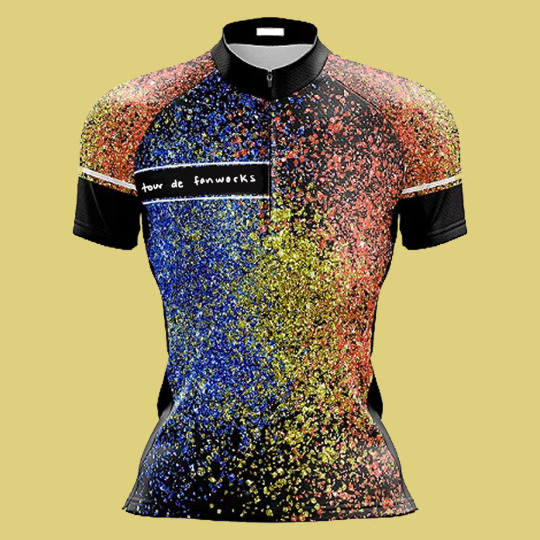
And now onto the category classifications! The category classification results are a bit complex- I’ve ranked everyone by how many stages they passed within that stage category- and if you completed both rest day goals, you’re ahead of people who completed the same number of stages! Because this is the first year, it’s a little haphazard so if you think I’ve missed any of your submissions please let me know! I’ve ranked these in order of number of stages- if you won a category classification with a higher number of stages you’re out of contention for the category classifications below it (mainly so more people can win, this may be tweaked for further iterations).
Category classifications winners:
The winner of the Flat Classification (which was single word prompts) was WhiteWeasel! Congratulations on your Accessory PNG!

The winner of the Mountain Classification (which was trope prompts) was @leadouttrain (ao3) aka Mod Inky!

The winners of the Hills Classification (which was AU prompts) were jointly @kingfisherprince (ao3) and @etapereine (ao3) Well done to you both! Enjoy your little hat!

The winner of the ITT Classification (which were the challenges) was hoelywritingsx! Chapeau to you for persevering! And enjoy this chapeau!

And finally, a warm round of applause for the three people who completed both of the rest day goals! Have some glasses to look like the distinguished members of the cycling fanwork community you are!
@thedeadparrot, @legendofthefireemblem and @indie-summer

If anyone wants to know their ranking in the various classifications or just chat, feel free to contact this account or Mod Inky's account @leadouttrain (where I will happily go in Depth about top 3s and so on)
Thank you all so much for participating no matter what you did, from commenting to a full sweep! Cycling fandom doesn't exist without you all!
And if you're feeling bereft without a challenge in your life, stay tuned....
(You think that the glitter jersey only comes in yellow?)
#tdffc24#tdffc#cycling rpf#sports rpf#fanwork classification#prompt classification#au classification#challenge classification#thank you all so much!#long post
13 notes
·
View notes
Text
At the Olympics someone once told Andy Murray that he was the first person to win two Olympic gold medals in tennis, and his response was something along the lines of, I think Venus and Serena would have something to say about that. Serena Williams is by far the best, most decorated tennis player _ever_ and she is constantly pushed aside for the likes of Djokovic or Nadal. You only have to look at the fact that women are only best of three sets vs men best of five in the grandslams to prove they view women's tennis as lesser. You think they couldn't do it? You think those sportswomen wouldn't be able to go 5 sets? You think they wouldn't absolutely hand the men their asses if they faced off against one another?
I am 100% all for this actually. I've always thought it'd be incredibly interesting to see mixed gendered team sports. Last Olympics I was fascinated by the mixed gendered swim relays and the mixed team triathlons. Sport is starting to change but these events are still seen as novelty. Oho look at how funny it is when men and women face off against one another!
Elite sport is by nature a gatekept institution. It is all about discrimination. Fuck the binary sports classifications.
"Should trans women be allowed to compete in women's sports" I don't think there should be women's sports. I think it's a silly artificial construction that only upholds the gender binary while it's benefits are incidental and would be better addressed directly.
Care about giving people with different body types and muscle mass a shot? Split your league by weight categories like boxing, or some other direct physical measurement. Gender is at best a poor proxy for these and we only do it because we still treat women are a different species. "But that still wouldn't be fully fair to everyone?" Sport isn't fully fair, it's about rewarding people with the most biological advantage. That's the whole point of it.
You want to give more sporting opportunity to women and minorities specifically? Okay then do that. Create your own opportunities league, but if we're giving up the pretense that it's about essential biological advantage then you better let trans women in.
What's that, the extra league would be treated as a novelty afterthought and would lack the prestige of the real main event? You mean like how women's events were treated when they were introduced? True! In fact women's leagues are still largely treated as secondary now, and you know how we can fix it? Make the main leagues open to everyone with weight, height or muscle mass categories so that people with different body types can excel. Like I suggested before. Problem solved.
Women's sport is bad actually.
#sports#yes 100% this#also like the paralympics proves different classifications of events is entirely possible based off body ability
48K notes
·
View notes
Text
i love love love my deranged best friend buck buckley!!!!!! he has big giant muscles and a gymbro phenotype but he hates and is bad at sports. he tells the guy he’s dating that he’s doing keto :( but then immediately turns around and makes 14 trays of lasagna to be consumed by his husband and child in an elimination-style tournament. he has a quadruple digit body count but all he ever really wants is to be loved and held and listened to. he has never heard of rambo or tlc but could identify a rhinoceros beetle from a hundred feet away and then tell you sixteen different facts about it including its scientific name and the date of its classification. he struggles with authority but will literally kill himself and then you (in that order) if you try to deviate from his plan when he’s the one in charge. he tried to become a navy seal because he wanted to be a badass but then self-selected out because he realized his heart was too big and squishy to do the job. just :( and also :)
3K notes
·
View notes
Photo

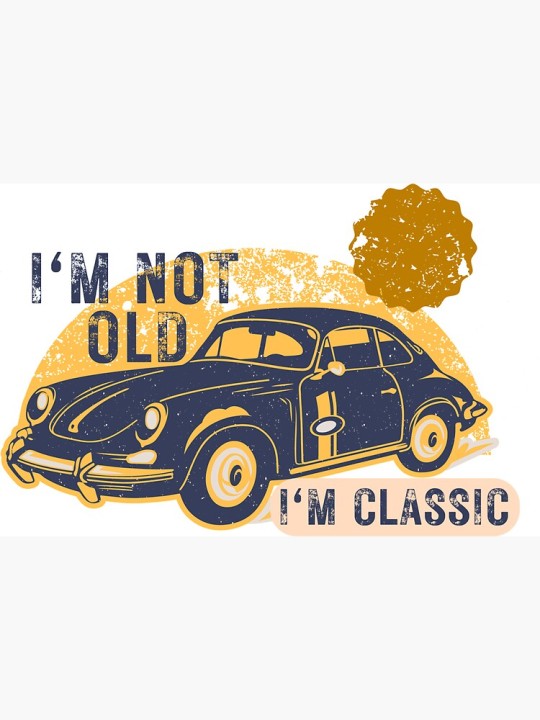


(via I'm Not Old I'm Classic Vintage Vehicle Magnet by Drkayou ⭐⭐⭐⭐⭐)
#findyourthing#redbubble#sports cars#cars#fast cars#father#classic#vehicle design#carslovers#car classifications#60s vintage#70s#80s#vintage 90s#90s style
1 note
·
View note
Text
I've been thinking that he has a group of acquaintances who are just as insane but less diabolical, but it is really funny to think of him being the crazy guy even inside the Insane Feral Science circle.
Like
"I think it's just a weird thing to get hung up on. Why is he so obsessed with turtles? He should pick a more normal obsession and just become abnormally fixated on octopuses instead. I mean, everyone else's research is much more productive and beneficial."
"Isn't Frank trying to reverse-engineer birds back into dinosaurs? Specifically so he can ride them?"
"That's...okay, that's different."
Also lol at him only becoming a criminal after the Shredder thing. The Council sends a covert operator to keep an eye on him and gather evidence of his crimes meanwhile he's monologuing his whole evil plan to everyone at the bar at least once a week.
I know that logically Draxum probably got away with making the mutagen and oozequitos because he was very careful about hiding his research and whatnot, but the much funnier explanation is that he's already so weird that when he rolled up to an academic conference two months after his lab exploded the first time with his 200 page paper on how he's going to bioengineer mosquitos to be the size of his hand (without giving a single reason as to why he wants to do this), the most he was met with was maybe a few raised eyebrows and a couple people wondering how he still gets grant money
#in my head it is a science bar for scientists#instead of sports they watch fish documentaries#and fistfight each other over classification disagreements
188 notes
·
View notes
Note
This is kinda a stupid question, but what type of hat that Victor is wearing?
It's not a stupid question at all. The simple answer is that it's a cap.
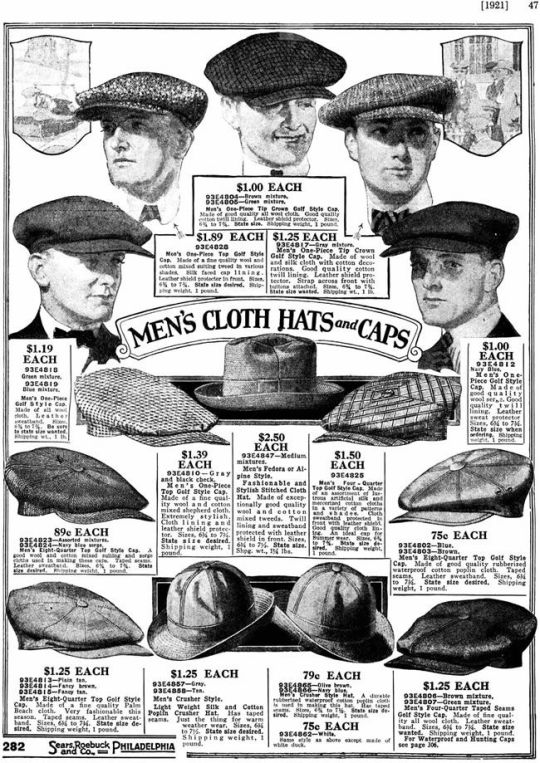
They were quite common at the time as workaday wear for a laborer, as sportswear, as flashy collegiate fashion, and as something basic you'd stick on a young boy's head. Sometimes they'd come in leather or suede, but more typically they'd be made of woven fabric like wool, tweed, or serge. Many designs have a button on top where the wedge shaped fabric segments comprising the crown converge. 'Flat caps' are sewn with a different, boxier panel pattern eliminating the button.
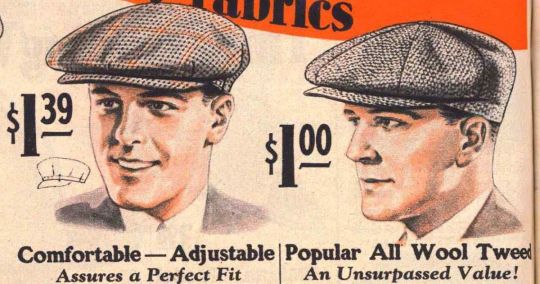
Caps got sort of egregiously puffy/floppy in the 1920s (along with a lot of other egregious things about the 20s). Below is Babe Ruth wearing what would have been considered fashionable at the time. Viktor's is pretty conservative by comparison.
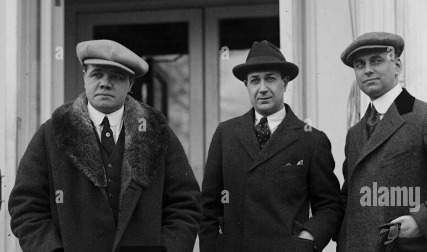
The less simple thing to answer is specifically what type of cap. There are a lot of variations, classification is a little hazy and loose as far as I can discern, and the parlance for them has changed over the past 100 years. For instance, you'll see a lot of people calling them 'Gatsby hats' or 'newsboy hats' now, but they were definitely not referred to as the former within the 1920s, and the latter is doubtful. I haven't seen any old catalog entries list them that way. Mostly they were called golf caps, cabbie caps, driving caps, or sports caps.
1K notes
·
View notes